The Adirondack Mountains of upstate New York are renowned for their tall, rocky summits that offer incredible views. Home to 46 peaks over 4,000 feet, this range draws hikers from across the east coast. Below we cover the ten highest peaks in the Adirondacks, ranging from the iconic Mount Marcy to lesser-known summits like Couchsachraga Peak.
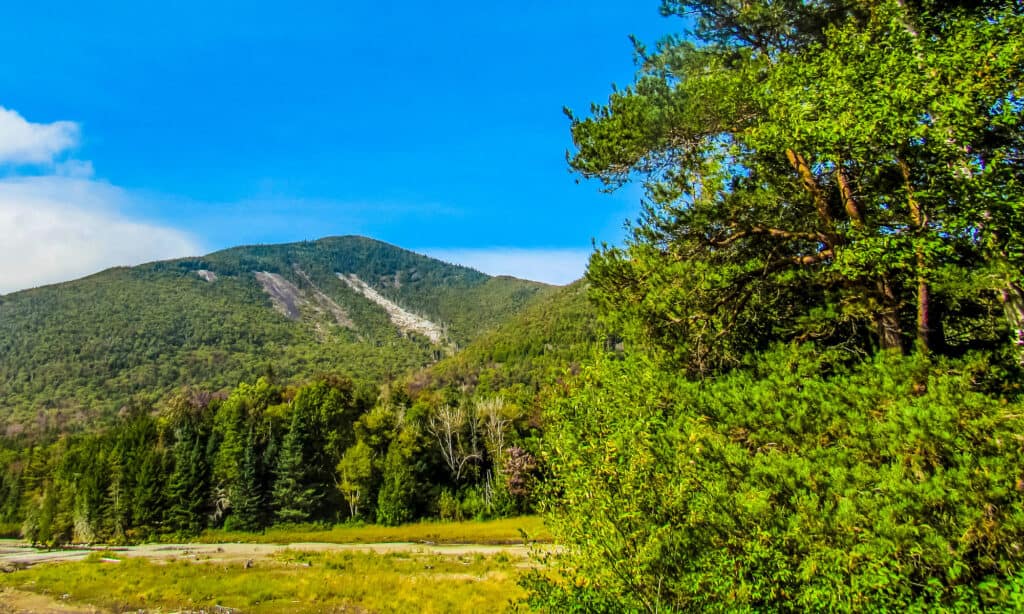
Mount Marcy is the highest peak in New York.
©Christopher P/Shutterstock.com
Mount Marcy – 5,344 feet.
As the highest peak in New York, Mount Marcy stands out as the crown jewel of the Adirondacks. Located near Lake Placid, its bare rocky summit tops at 5,344 feet. On a clear day, the 360-degree views stretch for miles, allowing you to see over 30 lakes and east to Vermont.
Several trails lead to the top, but the most popular is the Van Hoevenberg trail from Adirondak Loj. It’s 14-mile round trip and makes for a long, strenuous hike with sections of rugged boulders and rocks. Bring plenty of layers as the weather changes frequently. The sense of accomplishment at the top is well worth the effort.
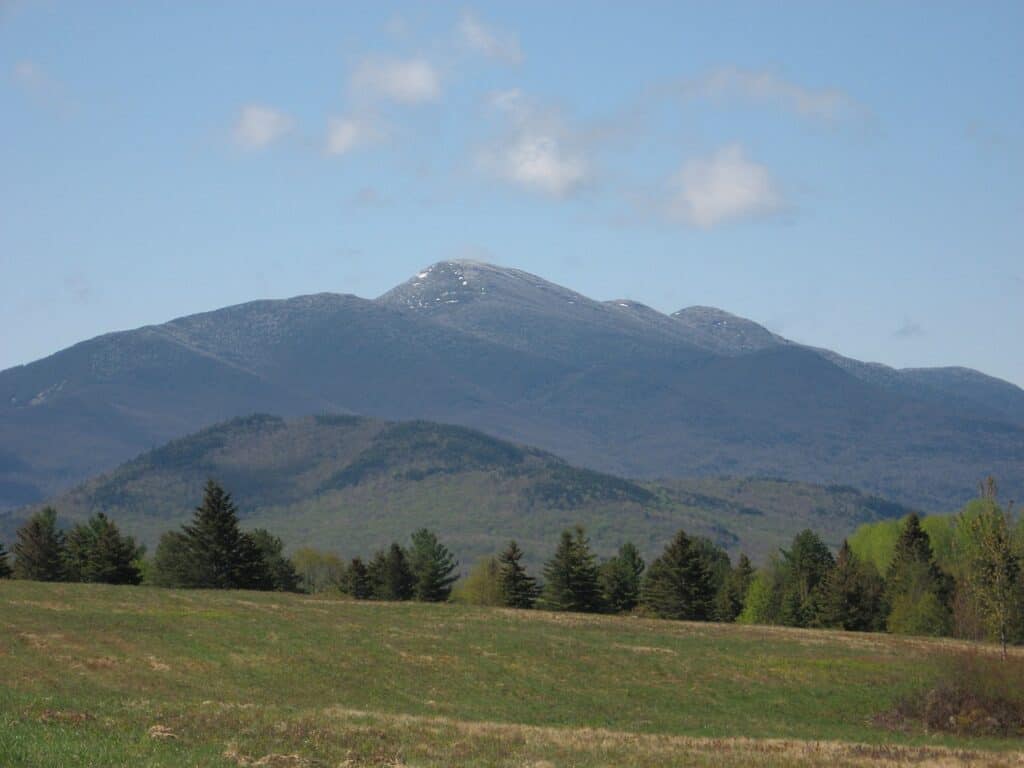
The second-highest peak in the Adirondacks is Algonquin Peak.
©Sirmont, Public domain, via Wikimedia Commons – License
Algonquin Peak – 5,114 feet
Algonquin Peak is the second-highest mountain in the Adirondacks, rising to 5,114 feet. Its summit sits in a picturesque bowl, surrounded by a cirque of other High Peaks. The views in every direction are phenomenal, taking in Wright Peak, Iroquois Peak, Mount Marcy, and more.
Most hikers tackle Algonquin and Wright Peak via the Algonquin Trail from Adirondack/ Loj. It’s an arduous 10-mile loop with sections of rock scrambling. Start early to allow time for both summits. The route is obvious, but bring a map and GPS.
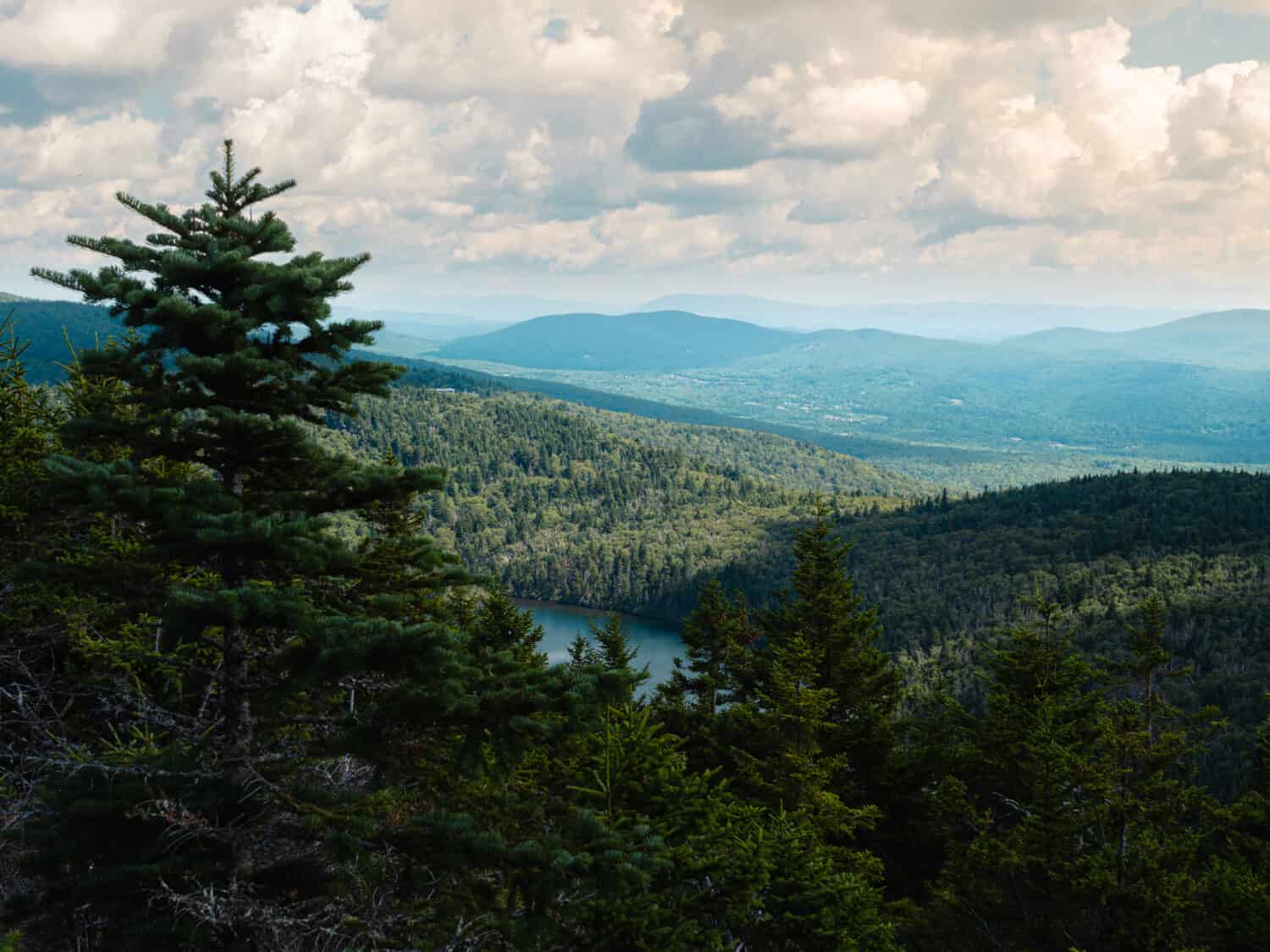
Mount Haystack is perfect if you want the iconic Adirondack hike.
©mjsimage/Shutterstock.com
Mount Haystack – 4,961 feet
Distinguished by its flat bald top and alluring views, Mount Haystack makes for an iconic Adirondack hike. At 4,961 feet, it presents a unique flat profile visible from many surrounding peaks, topped by stunning 360-degree vistas.
Most hikers approach Haystack from the Garden parking area in Keene Valley via the Johns Brook Trail. It leads steadily uphill for 3.5 miles to Slides Brook and the primary junction. Turn left and follow the Slides Brook Trail to the shoulder of Little Haystack.
Explore the bare mountaintop and unique ecosystems found only at these altitudes. Standing atop the flat rocky crown of Mount Haystack is an unforgettable Adirondack experience.
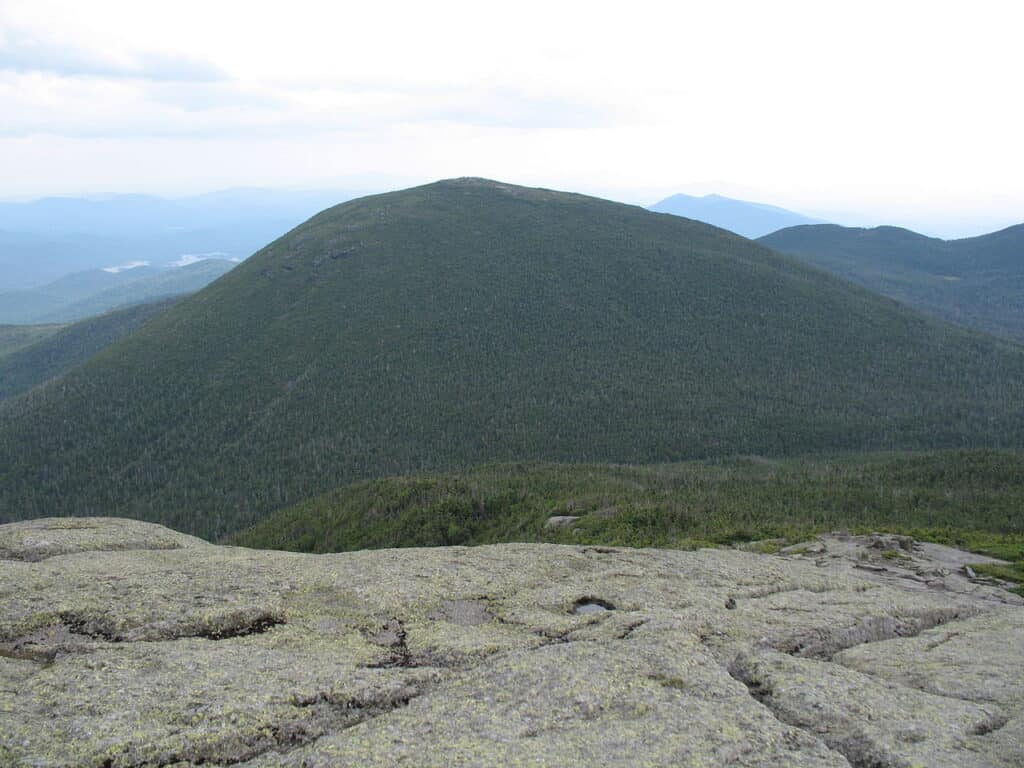
Mount Skylight has panoramic views of the wilderness.
©Mld74 / public domain – License
Mount Skylight – 4,926 feet
Nestled in the remote southwest corner of the High Peaks, Mount Skylight offers an alternative to some of the more crowded summits. At 4,926 feet, its open summit provides panoramic views of the surrounding peaks and wilderness, with Marcy and Haystack especially prominent.
To ascend Skylight, follow the 6-mile loop hike from Upper Works trailhead, crossing several rivers and marshes. The route can be wet in parts, so wear waterproof boots. The summit is marked only by a small cairn. Descend via the shorter route to Lake Tear of the Clouds for a 9-mile loop.

On clear days, you can see Canada and Vermont from the summit of Whiteface Mountain.
©iStock.com/robertcicchetti
Whiteface Mountain – 4,867 feet
Home to the popular Whiteface ski resort, Whiteface Mountain stands out for its accessibility. Visitors can drive or take a gondola to its bald rocky summit at 4,867 feet. Like the Esther Trail with its steep rocky ledges, hiking trails also lead up.
From the summit, sights stretch to Vermont and Canada on clear days. Trails also traverse the ridge line past Lookout Mountain. In winter, views are just as phenomenal from the ski slopes. Don’t miss the castle-like architecture of the Summit Building at the top.
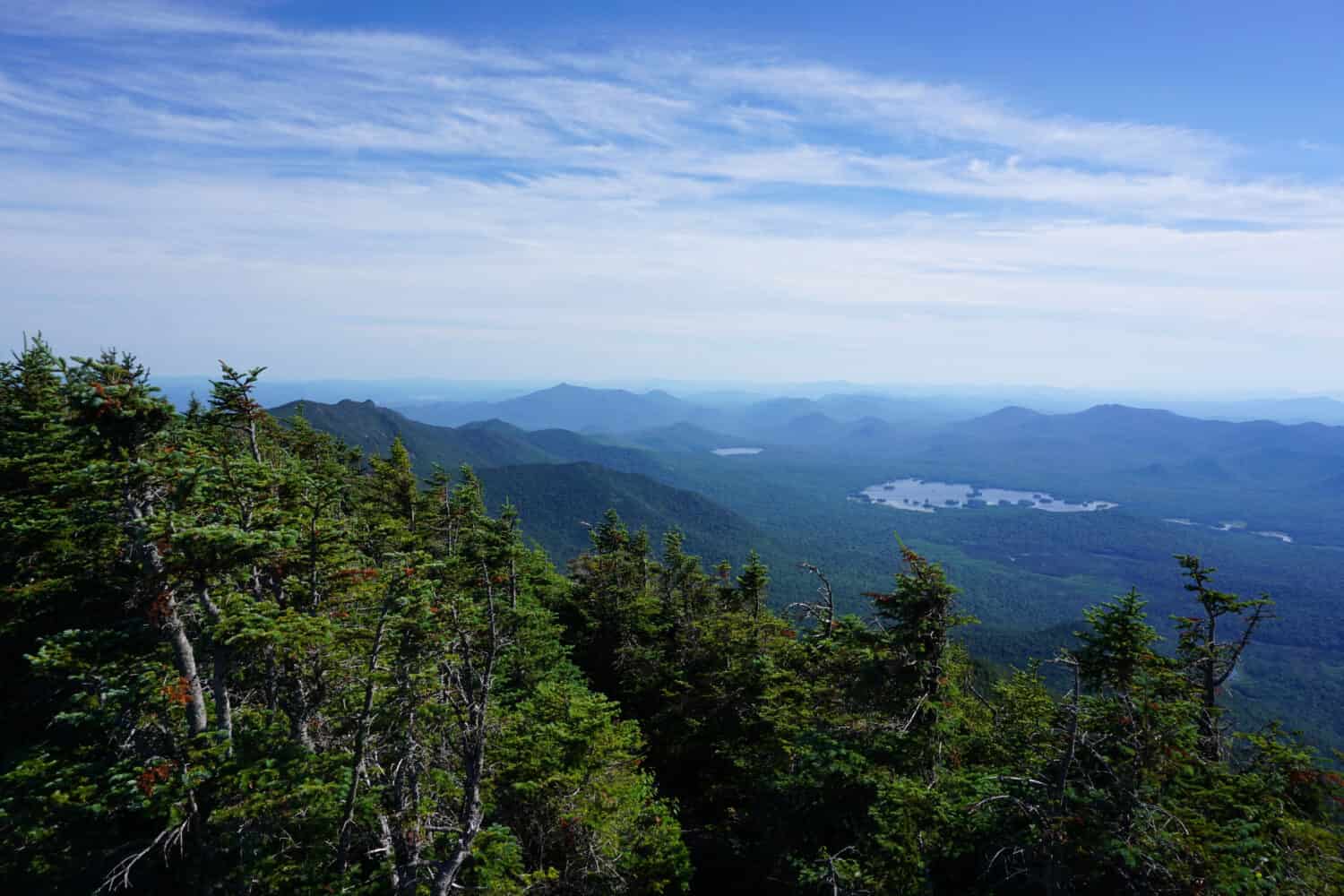
You need at least 10 hours to hike Dix Mountain.
©J.Marriott/Shutterstock.com
Dix Mountain – 4,857 feet
The heart of the High Peaks region, Dix Mountain’s summit sits at 4,857 feet and offers far-reaching vistas across the Adirondacks. Most hikers attempt Dix along with other nearby peaks as part of a long loop.
Dix is typically combined with neighboring Nippletop from Elk Lake trailhead and slides along the way. It makes for a challenging yet scenic trek. From Dix’s bald top, sights include Panther Gorge at the south end, with Giant Mountain also visible. Schedule at least 10 hours for the entire hike and bring reliable navigation.
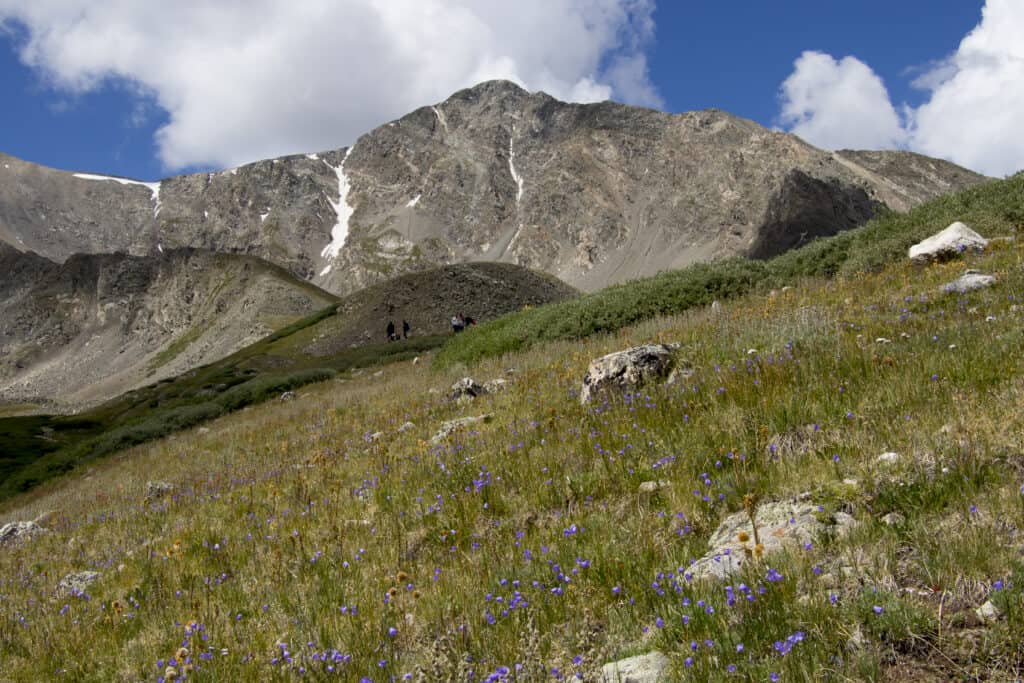
Grays Peaks offers breathtaking views.
©Images by Dr. Alan Lipkin/Shutterstock.com
Gray Peak – 4,840 feet
One of the more remote summits, Gray Peak, tops at 4,840 feet with breathtaking views across the High Peaks wilderness. Its ledgy bald summit lies tucked away from other mountains, offering a sense of true seclusion.
To ascend Gray, follow the Loop from Adirondack Loj. It’s a challenging 11-mile trek passing Avalanche Lake. Sections of thick blowdown and unmarked trails make route finding difficult, so come prepared with a map, compass, and GPS—when it catches the sunset or sunrise from the open summit for an unforgettable sight.

The most distinctive feature of Iroquois Peak is its sheer northeast face.
©Mwanner / Creative Commons – License
Iroquois Peak – 4,840 feet
Iroquois Peak shares the same elevation as Gray at 4,840 feet. Its most distinctive feature is its sheer northeast face, rising dramatically from the valley below. Views from the top are unbeatable, taking in the intimidating slides of Algonquin and Wright Peak.
The peak is usually accessed along the Algonquin-Iroquois loop from Adirondak Loj. Miles of rock scrambling and boulder hopping make it a challenging endeavor. Summiting Iroquois also involves a steep rock chimney that requires care to navigate. Don’t underestimate the difficulty of this peak.
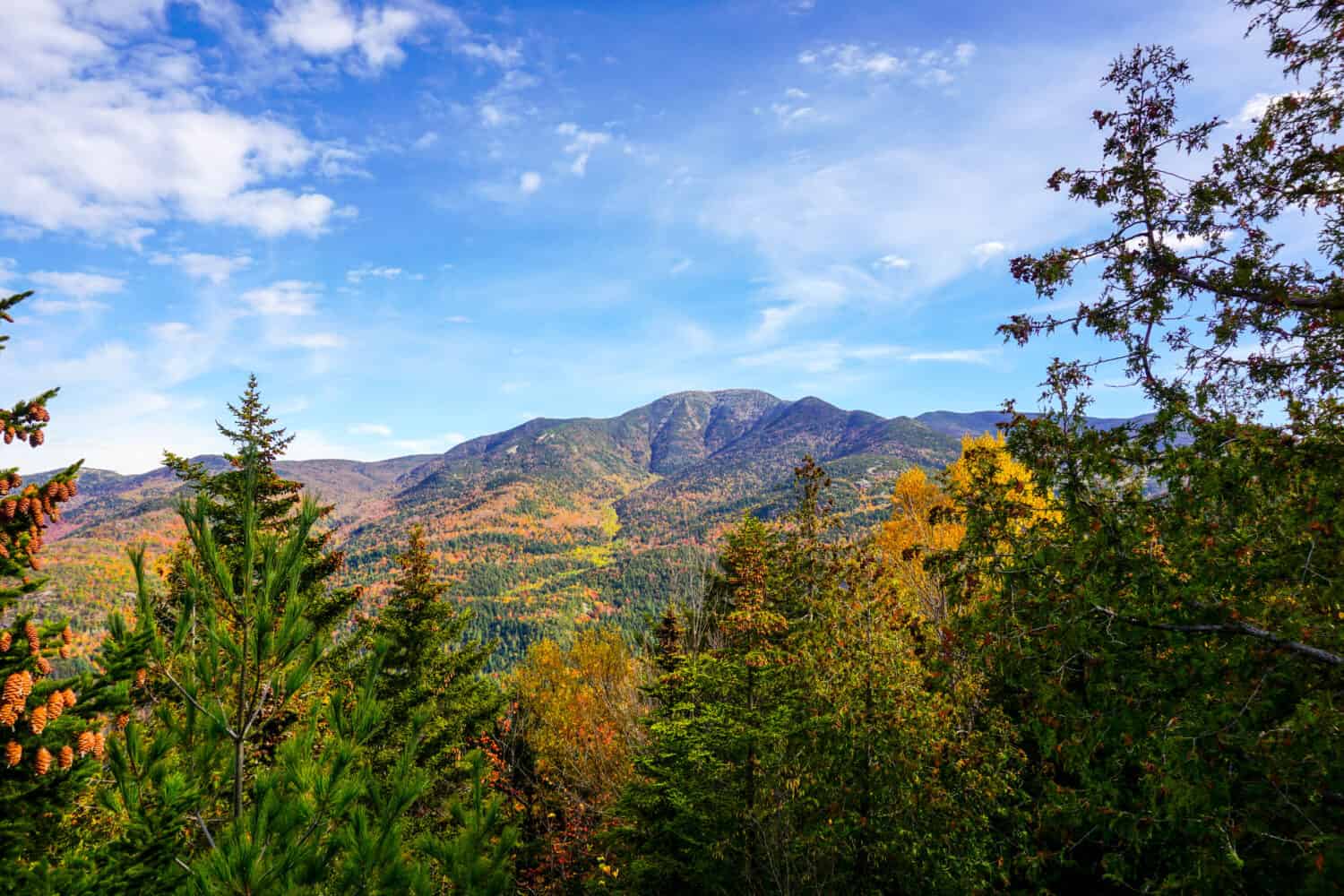
Giant Mountain is one of the most popular peaks in the Adirondacks.
©1085605199/Shutterstock.com
Giant Mountain – 4,627 feet
One of the most popular hikes in the Adirondacks, Giant Mountain owes its name to its imposing Bald Rock summit, which slopes dramatically on all sides. At 4,627 feet, the views stretch over high peaks to the north and south.
The standard route up is the Ridge Trail from Route 73. It gains over 1,600 feet in just 3.5 miles. Near the top, ladders and cables aid hikers up the steep rock slabs. Crowds flock here on weekends, so consider a midweek hike. Make time to take spur trails to Giant’s north and south peaks for the whole experience.

Phelps Mountain is one of the smaller 4,000-footers.
©89963509/Shutterstock.com
Phelps Mountain – 4,161 feet
Though one of the “smaller” 4,000-footers, Phelps Mountain still offers outstanding views with minimal effort compared to other High Peaks. Its open summit tops at 4,161 feet, providing vistas across the Johns Brook Valley.
Located near Keene Valley, Phelps is commonly ascended via the Phelps Trail from the Garden. It’s only 7.5 miles round-trip, and its relatively gentle grade makes it popular. Time your summit to catch the sunrise or sunset for stunning colors across the sky.
When to Visit
The Adirondack High Peaks offer spectacular hiking most of the year, but certain seasons and months provide ideal conditions for tackling these mountains.
Summer (June-August)
The peak hiking season. Long days, warm weather and no snowpack allow access to all trails and peaks. However, expect crowded trails, especially on weekends. There’s a higher risk of thunderstorms rolling in during the afternoon.
Fall (September-October)
Cooler temperatures and fall foliage make for pleasant hiking with fewer crowds. However, prepare for cold temps and wind on summits. Autumn brings more frequent rain that can lead to muddy trails.
Winter (November-March)
The High Peaks see intense winter conditions. Only advisable for expert mountaineers using snowshoes, crampons, and ice axes. Avalanche risk on slides and frozen summits. Short daylight hours. Skiing ascents are possible from Whiteface and Mt. Van Hovenberg.
Spring (April-May)
A beautiful but tricky season for High Peaks hiking. Trails are muddy, and summits can remain snow-covered and frigid. Be prepared for ice and rapid weather changes. Avoid steep summer trails prone to run-off flooding.
Caution and Safety Tips
Hiking the High Peaks poses inherent risks. Prepare properly and make cautious decisions to prioritize safety. Key tips:
- Check detailed weather reports and trail conditions before departing. Turn back in harsh conditions.
- Equip yourself with proper gear for the terrain and possible weather. Carry essentials like navigation, insulation, illumination, and first aid.
- Know your limitations and start with peaks suited to your ability. Don’t take on slides and exposed rock scrambles beyond your comfort zone.
- Register at the trailheads before starting and sign out when departing. Carry ID and share plans with others.
- Follow marked trails and use reliable topographic maps and compasses. Gauge arrival time to avoid descending after dark.
- Pack extra food, water, and warm clothing if you get delayed or lost.
- Beware of health risks like hypothermia, heat stroke, exhaustion, and altitude sickness. Turn back if any symptoms appear.
| Peak | Elevation (feet) |
|---|---|
| Mount Marcy | 5,344 |
| Algonquin Peak | 5,144 |
| Mount Haystack | 4,960 |
| Mount Skylight | 4,926 |
| Whiteface Mountain | 4,867 |
| Dix Mountain | 4,926 |
| Gray Peak | 4,867 |
| Iroquois Peak | 4,857 |
| Giant Mountain | 4,840 |
| Phelps Mountain | 4,161 |
Conclusion
With 46 peaks over 4,000 feet, the Adirondacks offer limitless hiking opportunities. Though crowded at times, these legendary mountains provide access to stunning vistas, unique alpine ecosystems, and a profound sense of accomplishment for those who journey to their summits.
The photo featured at the top of this post is © 1085605199/Shutterstock.com
Thank you for reading! Have some feedback for us? Contact the AZ Animals editorial team.







